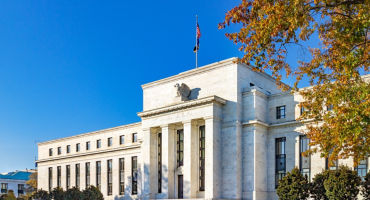US
US equities (+5.6%) ended sharply higher after a slowdown in consumer and producer price gains fueled a powerful rally in stocks, which was exacerbated by a frenzy of short covering and a scramble for bullish options. The core Consumer Price Index grew 6.3% year over year in October, down from 6.6% in September, while the core Producer Price Index advanced 5.4% year over year, slowing from 5.6% in September. These promising developments offered hope that inflation had peaked, firming the belief that the Fed will start to moderate the pace of interest-rate increases in December. The Fed implemented a fourth consecutive rate hike of 75 basis points (bps) in November, with Fed Chair Jerome Powell suggesting that the terminal rate will be higher than previously expected. Cryptocurrencies were battered after the dramatic collapse of FTX sparked fears of contagion across the crypto industry. Democrats retained control of the Senate, and Republicans secured a narrow majority in the House of Representatives, likely deepening the legislative gridlock and diminishing the potential for significant government policy changes during President Joe Biden’s next two years in office. Of the 99% of companies in the S&P 500 Index that had reported third-quarter earnings, the blended year-over-year earnings growth rate for the index was 2.5%, well below the 10-year average growth rate of 8.8%. The forward 12-month price-to-earnings ratio stood at 17.6.
Economic data released in November signaled that the US economy remained resilient amid strong headwinds. The labor market was broadly tight despite surging interest rates and a gloomier economic outlook. US companies reported strong hiring and robust wage increases in October, as nonfarm payrolls grew by 261,000 and average hourly earnings rose 0.4% (4.7% annually). The unemployment rate increased to 3.7%, while initial jobless claims trended higher amid an uptick in layoffs, notably among some high-profile technology companies. Spending was surprisingly strong, even as interest rates continued to soar. In October, headline retail sales advanced 1.3% — the largest gain in eight months — while consumer spending rose 0.8%, complicating the Fed’s task of curbing strong demand, which threatens to keep inflation elevated for longer. However, the sustainability of spending faces pressure from dwindling savings and greater household debt, with the personal savings rate slipping to 2.3% in October — the lowest since 2005 — and US household debt in the third quarter climbing at the fastest pace in 15 years. The Conference Board’s Consumer Confidence Index fell to 100.2 on declines in expectations and current conditions and waning plans for big-ticket purchases. The housing market remained hampered by soaring mortgage rates, with US homebuilder sentiment in November near its lowest level in a decade. In October, housing starts and existing-home sales declined further, but new-home sales unexpectedly rose.
Softer measures of demand, production, and employment pushed the Institute of Supply Management (ISM) Manufacturing Index down to 49.0 in November, indicating that the manufacturing sector contracted for the first time since May 2020. However, declines in supply-chain bottlenecks and input prices offered hope that inflation has peaked. The services sector expanded at the slowest pace for two-and-a-half years as the ISM Services Index slid 2.3 points to 54.4 in October on moderating growth in new orders and business activity. A separate preliminary survey from S&P Global signaled that services sector activity continued to decline in November; weaker demand drove new business and orders lower, while input costs increased at the slowest pace in almost two years. The National Federation of Independent Businesses (NFIB) Small Business Optimism Index fell for the first time since June amid lower sales expectations and a decline in hiring intentions, even as labor shortages remained a major problem for employers.
All 11 sectors in the S&P 500 Index (+5.6%) posted positive results. Materials (+11.8%) was the top-performing sector. Financials (+7.1%) was another notable outperformer, driven by capital markets (+9.6%). Communication services (+6.9%) rose, most notably media (+13.0%) and interactive media & services (+10.3%). Consumer discretionary (+1.0%) was the worst-performing sector, led lower by automobiles (-11.6%). Energy (+1.3%) also underperformed, as the EU weighed a higher-than-expected price cap on Russian crude, and economic slowdown threatened the demand outlook.
































Monthly Market Review — October 2025
Continue readingBy